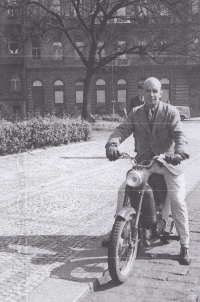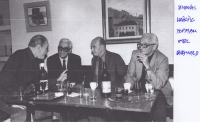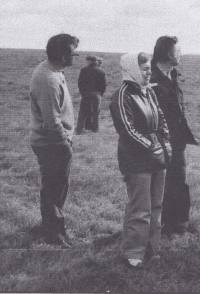I was the welcome boy who waved at the Red Army

Download image
Kamil Lhoták was born on the 7th of May in 1941 in Prague. His father was a renowned painter, printmaker and illustrator, Kamil Lhoták. His mother came from a Jewish family, her birth name was Hertha Guthová. She converted to Catholicism and changed her given name to Ludmila. Her marriage saved her from the transport but her parents were transported and died in the concentration camp of Sobibór-Osowa. The closest family of Kamil Lhoták survived the war without repercussions but witness’ mother Ludmila started suffering with major mental issues. Those were, paradoxically, connected with the relief of the vicissitudes of the German occupation. After unsuccessful treatments, she spent the rest of her life in a facility. Witness father, Kamil Lhoták, later divorced her. Kamil Lhoták the Elder was a member of the artists’ group ‘42’ whose members had major clashes with the State Security. Through his father, the witness met many notable artists. He was deeply influenced by musical composer Jan Rychlík. Kamil never participate in art life publicly. For forty years, he worked as a construction engineer in Aerospace Research Centre in Praha – Letňany and later in Aero Vodochody. In 1971, he married his wife and they had two children together. They divorced in 1986. Before his first marriage as well after it ended, he lived with his father, in whose household he was able to closely observe inspiration, work and views of the famous painter and his friends. In 2001, the witness married his childhood love Anna who died in 2013. He helped to create a fictionalised biography of his father, Můj otec Kamil Lhoták [My father Kamil Lhoták]. At the time of recording (2020), he lived in Suchdol near Kutná Hora.











